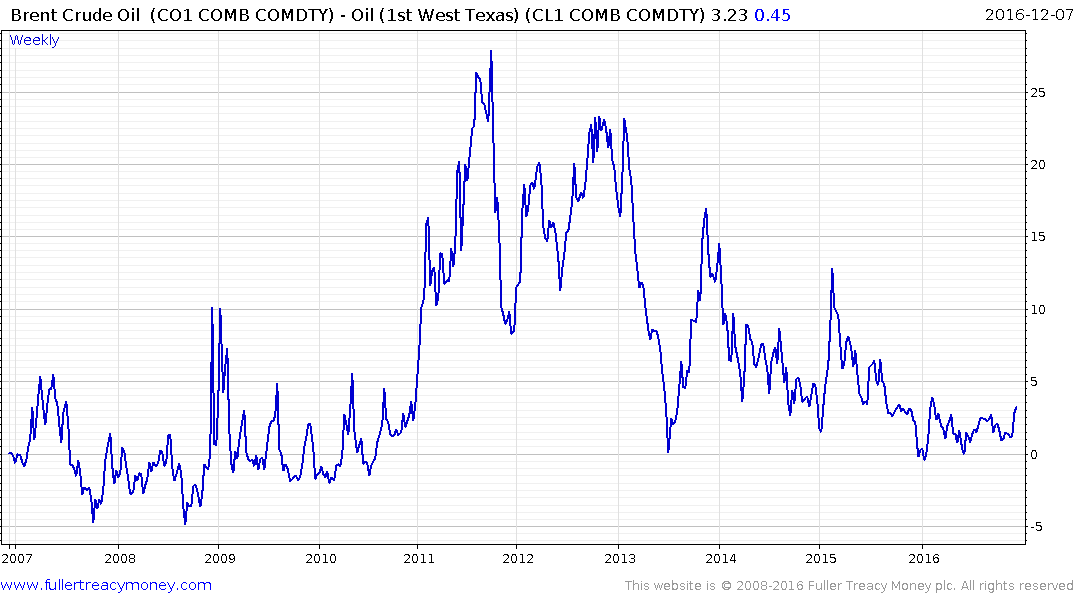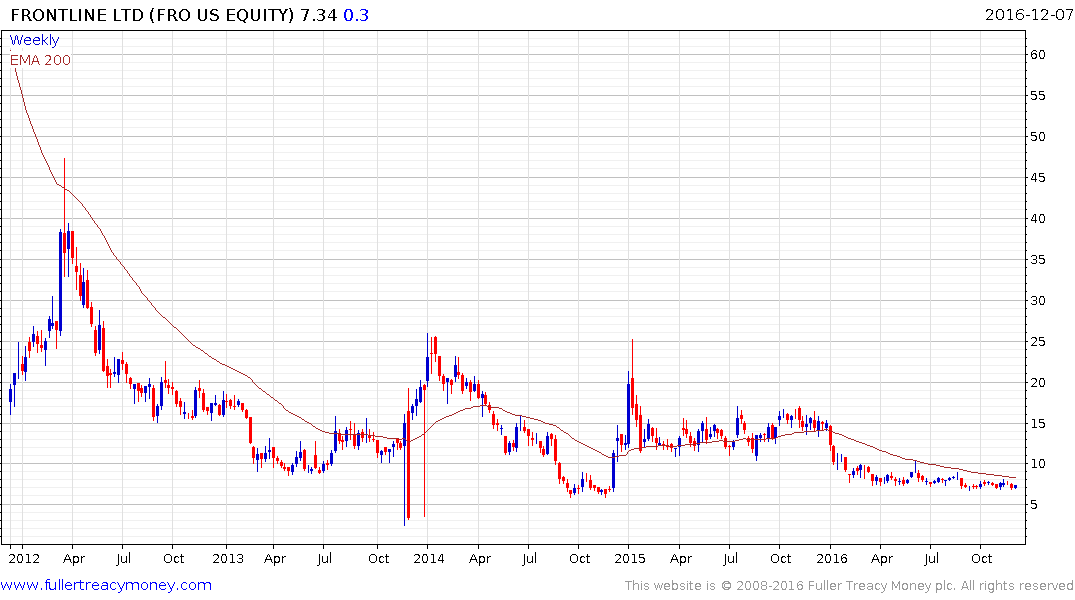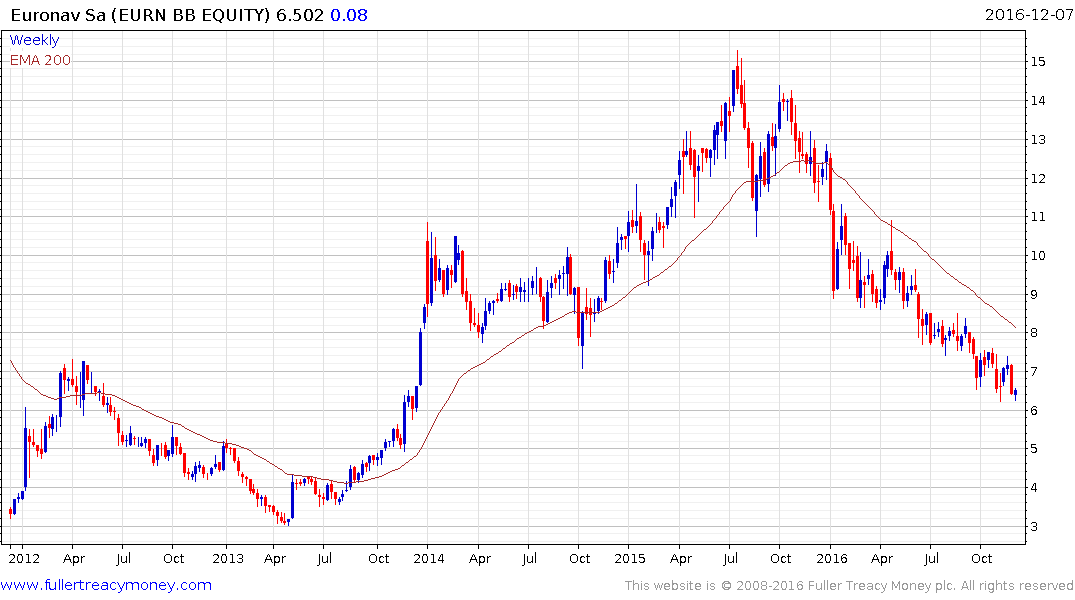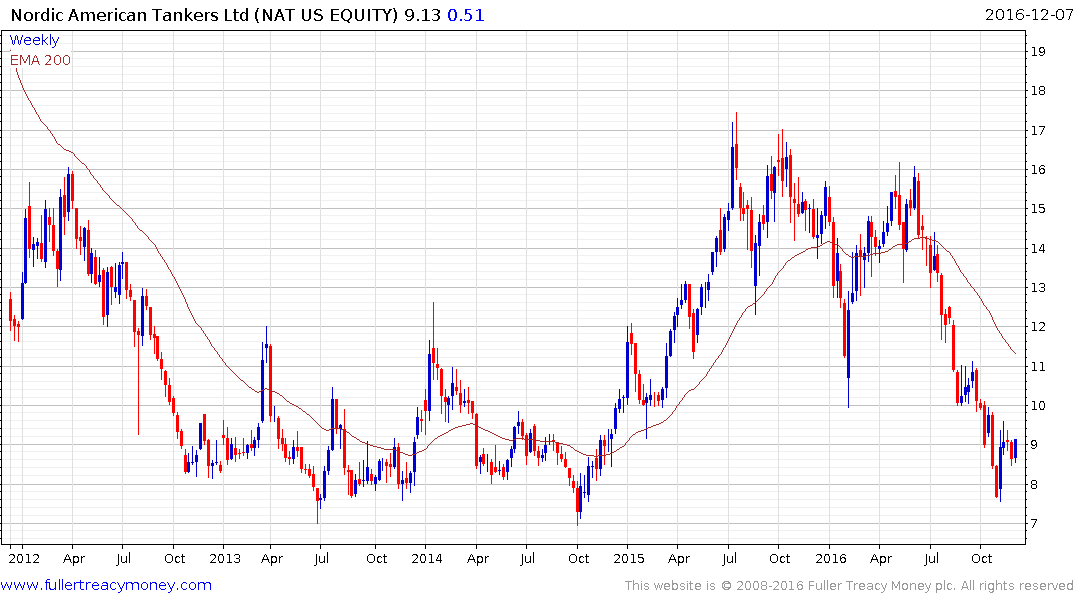In mammoth task, BP sends almost three million barrels of U.S. oil to Asia
This article by Florence Tan for Reuters may be of interest to subscribers. Here is a section:
While BP's operations are currently the most sophisticated, others have also begun developing U.S./Asia trade.
China's Unipec, the trading arm of Asia's largest refiner Sinopec (600028.SS), is shipping about 2 million barrels of WTI to China this month, while trading house Trafigura is also exporting some 2 million barrels of U.S. oil to Asia.
Incentives to bring U.S. crude into Asia have risen after the Middle East-led producer club of the Organization of the Petroleum Exporting Countries (OPEC) and Russia agreed to cut output, encouraging refiners across the region to seek alternatives to offset potential supply shortfalls.
"OPEC is putting U.S. shale oil to the test... (and) we will truly see what it can deliver," said Bjarne Schieldrop, chief commodity analyst at SEB. He predicted 2017 would be a "shale oil party" with a surge in U.S. exports after the OPEC production cuts.
The operation to send the oil, worth around $150 million, to Asia-Pacific buyers lasted four months and involved BP traders in the United States and Singapore, while colleagues from London were responsible for ship chartering, the sources said and data showed.
BP took advantage of arbitrage between cheaper U.S. West Texas Intermediate (WTI) CLc1 crude and the global benchmark Brent LCOc1.
The deal was aided by cheap tanker rates and a price/time curve, where future oil deliveries are more expensive than those for immediate discharge, making sourcing oil from as far away as North America profitable.
The US has just started exporting crude oil for the first time in decades and if the Keystone pipeline is finally permitted in 2017 if would give Canadian heavy crude an outlet to Texas’s refining and shipping infrastructure that would allow even greater volumes to be exported.
The expanded Panama Canal raises the prospect of a short-cut to Asia from Texas. That is of course once ships have been retrofitted to be tugged through the new canals which is taking somewhat longer than originally anticipated.

The US international oil trade has certainly been helped by the arbitrage between WTI and Brent crude but since the spread is close to decade lows the low price of shipping is probably a more important factor.
The oil tanker sector has been beaten up by low oil prices, paltry global economic growth and a sharp increase in the delivery of new ships. It is one of the few sectors still trending lower Frontline has seen its market cap decimated over the last decade and it remains in a lengthy Type-3 base.

Belgian listed Euronav rallied impressively between 2013 and 2015 but has been trending lower for 18 months and a break in the progression of lower rally highs would be required to signal a return to demand dominance beyond the short-term.

The sector is highly leveraged to global economic growth but the oversupply of ships will need to be worked through before meaningful gains can be made by the respective shares.

Nordic American may have turned that corner. It surged following its results a month ago, and firmed today from above $8. A sustained move below that level would be required to question potential for additional upside.


